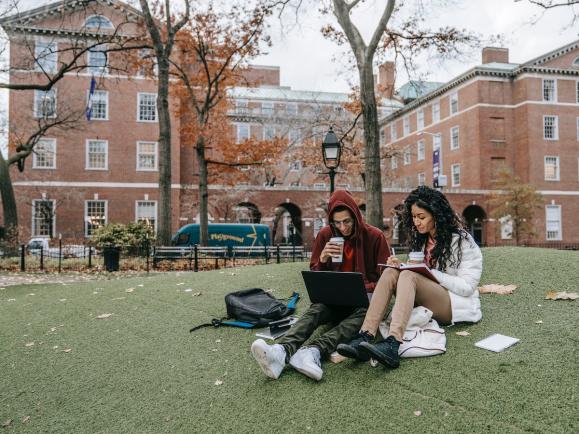
The political unrest that rocked two universities over the past three months and led to the resignations of two Ivy League presidents has landed like an unwelcome thud on institutions that are already struggling to maintain the American public’s trust. For three generations, the national ambition of “college for all” shaped America’s culture and economy, as most high-school graduates took it for granted that they would earn a degree.
That consensus is now collapsing in the face of massive student debt, underemployed degree-holders and political intolerance on campus. In the past 10 years, the percentage of Americans who expressed confidence in higher education fell from 57 percent to 36 percent, according to Gallup. A decrease in undergraduate enrollment since 2011 has translated into 3 million fewer students on campus. Almost half of parents say they’d prefer not to send their kids to a four-year college after high school, even if there weren’t any obstacles, financial or otherwise. Two-thirds of high school students believe they’ll be fine without a college degree.
The pandemic confirmed a sobering realization for a lot of middle-class American families: “College for all” is damaged for most. Arthur Levine, president emeritus of Columbia Teachers College, compares this moment in post-secondary education to the colossal change that came after the Industrial Revolution. That 19th-century wave of disruption washed over schools designed to meet the needs of a religious, agricultural society and changed higher education into a system of community colleges, land-grant universities and graduate schools. The dilemma of today’s high school students is that while a similarly massive economic disruption has arrived, new educational alternatives haven’t. Levine says of Generation Z that whatever comes next for them, it’s not going to come soon enough.
So how did one of the crown jewels of American society blow so much confidence so quickly? If the pandemic marked the time the “college for all” model finally cracked, 1965 marked its beginnings. As the baby boomers came of age, the government made loans available to any college-bound 18-year-old with a high school diploma to maintain the most educated workforce in the world. High schools got rid of vocational education programs in favor of college prep classes. Prestige and cash saturated college campuses while alternatives like technical and vocational schools faded away.
Between 1965 and 2011, university enrollment increased almost fourfold to 21 million as the earning differential between high school and college graduates expanded. However, embedded in the infrastructure of universities were hairline fractures and misaligned incentives that led to the system’s failure. University governance was designed for an analog era. Decisions are filtered through a slow, deliberative process until faculty, administrators, and trustees reach a consensus. The genius of the system is that it escapes the criticisms of top-down control and protects academic freedom against political interference. The weakness is that it’s a recipe for a lack of progress.
The digital revolution demanded a quick realignment of the academy so that students could learn a quickly emerging set of skills to meet changing labor-market demands. However, instead of adapting, campus interest groups protected their turf. Instead of a degree, some employers are adopting skills-based hiring, looking at what students know instead of what credentials they hold.
Most children are taught that they have to have a college degree to be successful, but in today’s world, that’s not the case. There are plenty of other avenues to success besides a four-year education, and it seems that mindset is here to stay.

